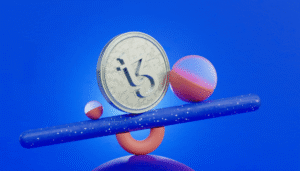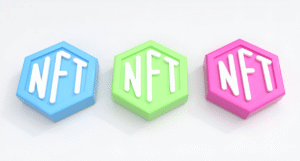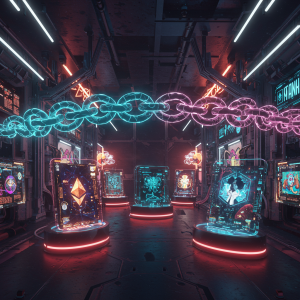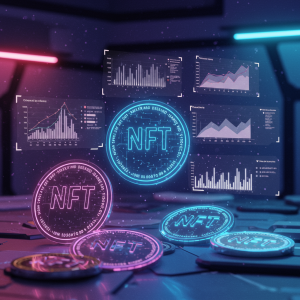The Multi-Trillion Dollar Potential Locked Behind the Dynamic Oracle Problem for Verifiable Off-Chain Asset States

Traditional financial markets represent over $400 trillion in global assets, yet most of this value remains isolated from blockchain ecosystems due to a fundamental technical challenge. The dynamic oracle problem prevents reliable verification of real-world asset states on blockchain networks, creating an enormous barrier to mainstream adoption of decentralized finance.
This challenge extends far beyond simple price feeds or static data points. Dynamic oracles must continuously verify the changing states of physical assets, legal ownership structures, and complex financial instruments that exist outside blockchain networks. Current solutions either sacrifice security for functionality or remain too limited for large-scale implementation.
The entity that solves this problem will unlock access to traditional asset classes worth hundreds of trillions of dollars. Real estate, commodities, intellectual property, and corporate securities could all become programmable assets within decentralized systems, fundamentally transforming how global finance operates.
Understanding the Oracle Complexity Problem
Basic oracles handle straightforward data feeds like cryptocurrency prices or weather information from reliable sources. Dynamic oracles face exponentially more complex challenges when verifying the constantly changing states of real-world assets that involve multiple parties, jurisdictions, and verification methods.
Consider a commercial real estate property as an example. Its blockchain representation requires continuous verification of ownership status, occupancy rates, maintenance conditions, legal encumbrances, and market valuations. Each of these data points changes frequently and requires different verification methods from various trusted sources.
Current oracle solutions typically handle only one aspect of this verification challenge at a time. Price oracles track market values but cannot verify ownership transfers. Legal document oracles might confirm contract existence but cannot validate compliance with ongoing obligations. No current system provides comprehensive, real-time verification of complex asset states.
The Scale of Locked Value
Global real estate markets alone represent approximately $280 trillion in value, with commercial properties accounting for roughly $33 trillion. Most of this value remains inaccessible to DeFi protocols because blockchain systems cannot reliably verify property states, ownership changes, or performance metrics.
Corporate bonds and debt instruments add another $130 trillion in potential tokenizable assets. These instruments require continuous monitoring of credit ratings, covenant compliance, payment histories, and collateral valuations. Dynamic oracles would need to aggregate and verify information from credit agencies, regulatory filings, and financial institutions.
Intellectual property represents a largely untapped category worth trillions globally. Patents, trademarks, copyrights, and trade secrets could become programmable assets if oracles could verify their legal status, licensing agreements, and usage metrics across multiple jurisdictions.
Technical Challenges Beyond Current Solutions
Decentralized oracle networks like Chainlink provide excellent solutions for relatively simple data feeds but struggle with the multi-dimensional verification requirements of complex asset states. The challenge isn’t just aggregating data from multiple sources but ensuring the logical consistency and temporal accuracy of interdependent information.
Consensus mechanisms that work well for price feeds become problematic when dealing with subjective assessments or information that requires specialized expertise to evaluate. How do you reach consensus on whether a building meets maintenance standards or whether a patent infringement claim has merit?
Privacy requirements add another layer of complexity. Many real-world assets involve confidential information that cannot be publicly disclosed on blockchain networks. Dynamic oracles must verify asset states while preserving necessary privacy, requiring sophisticated cryptographic approaches that current systems don’t adequately address.
Regulatory and Legal Integration Hurdles
Real-world assets exist within complex regulatory frameworks that vary by jurisdiction and asset type. Dynamic oracles must understand and comply with these varying requirements while maintaining the global accessibility that makes blockchain systems valuable.
Legal ownership concepts don’t translate directly to blockchain token ownership models. Traditional assets often involve multiple parties with different rights and obligations, such as beneficial owners, legal titleholders, and various creditors with security interests. Dynamic oracles must accurately represent these complex ownership structures.
Cross-border asset verification presents additional challenges as legal systems, regulatory requirements, and verification standards differ significantly between countries. A dynamic oracle system needs to navigate these differences while maintaining consistent verification standards.
Economic Incentive Misalignment
Current oracle economic models don’t align well with the requirements of continuous asset state verification. Price feed oracles can operate on simple fee-per-query models, but dynamic asset verification requires ongoing monitoring and complex validation processes that don’t fit traditional oracle payment structures.
The value of accurate verification scales with the underlying asset value, but the cost of providing verification doesn’t scale proportionally. Verifying the state of a billion-dollar commercial property requires similar effort to verifying a million-dollar property, creating economic inefficiencies that current oracle models cannot address.
Liability concerns also create misaligned incentives. Traditional oracle providers limit their liability exposure, but dynamic asset verification errors could result in significant financial losses for protocol users. This liability gap prevents institutional adoption and limits the types of assets that can be reliably tokenized.
Emerging Solutions and Their Limitations
Several projects are attempting to address aspects of the dynamic oracle problem, but none provide comprehensive solutions for large-scale asset tokenization. Most focus on specific asset types or simplified verification processes that work for limited use cases but don’t scale to broader markets.
Hybrid approaches that combine centralized verification with decentralized consensus show promise but introduce single points of failure that institutional users cannot accept. The challenge lies in maintaining decentralization while providing the accuracy and reliability that multi-trillion-dollar asset classes require.
Machine learning and AI-enhanced verification systems offer potential improvements in processing complex, multi-source data feeds. However, these systems often lack the transparency and auditability that institutional users require for compliance and risk management purposes.
Market Opportunity Analysis
The first comprehensive solution to the dynamic oracle problem will capture enormous market share in the emerging tokenized asset space. Conservative estimates suggest that even 1% tokenization of global real estate would create a $2.8 trillion market opportunity.
Traditional financial institutions are actively exploring blockchain integration but remain constrained by oracle limitations. Banks, insurance companies, and investment funds recognize the efficiency benefits of programmable assets but cannot proceed without reliable verification systems for their existing holdings.
For projects focused on bridging traditional assets with blockchain technology, NFT Marketo provides specialized insights and strategies for navigating the complex intersection of real-world assets and decentralized systems.
Cross-industry applications multiply the potential impact. Supply chain management, carbon credit verification, and intellectual property licensing all face similar dynamic verification challenges. A comprehensive oracle solution could address multiple industries simultaneously, creating network effects that increase adoption rates.
Technical Architecture Requirements
Successful dynamic oracle systems will likely require modular architectures that can adapt to different asset types and verification requirements. Rather than one-size-fits-all approaches, these systems need flexible frameworks that can incorporate specialized verification modules for different industries and asset classes.
Real-time data integration capabilities become essential when dealing with assets whose states change frequently. Traditional batch processing approaches don’t work for assets where timing affects value or compliance status. The system must handle continuous updates while maintaining data integrity and consistency.
Cryptographic privacy solutions will be mandatory for institutional adoption. Zero-knowledge proofs, secure multi-party computation, and other privacy-preserving technologies must be integrated seamlessly to allow verification without disclosure of sensitive information.
Investment and Development Priorities
Research and development investments in dynamic oracle solutions could yield extraordinary returns given the scale of locked value. However, these investments require longer time horizons and deeper technical expertise than typical blockchain projects.
Partnerships with traditional financial institutions, legal firms, and regulatory bodies will be essential for developing practical solutions. Technical excellence alone won’t solve the dynamic oracle problem without deep understanding of existing asset management practices and regulatory requirements.
Talent acquisition becomes crucial as these projects require expertise spanning blockchain technology, traditional finance, legal frameworks, and complex systems integration. The multidisciplinary nature of the challenge demands teams with unusually broad and deep skill sets.
Future Market Evolution
The dynamic oracle problem represents one of the last major technical barriers to mainstream blockchain adoption in traditional finance. Solving this challenge will likely trigger rapid growth in tokenized asset markets and DeFi protocol expansion into traditional asset classes.
Regulatory clarity will follow technical solutions as governments develop frameworks for overseeing tokenized traditional assets. Early movers in dynamic oracle development will help shape these regulatory approaches and gain first-mover advantages in emerging markets.
The convergence of improved oracle technology with growing institutional interest in blockchain systems creates a unique opportunity window. Organizations that successfully navigate both technical and regulatory challenges will position themselves at the center of a fundamental transformation in global finance.
Success in solving the dynamic oracle problem requires sustained commitment to complex technical challenges combined with deep engagement with traditional financial systems. The potential rewards justify these investments, but only for organizations capable of executing comprehensive solutions that meet institutional requirements for security, compliance, and reliability.








